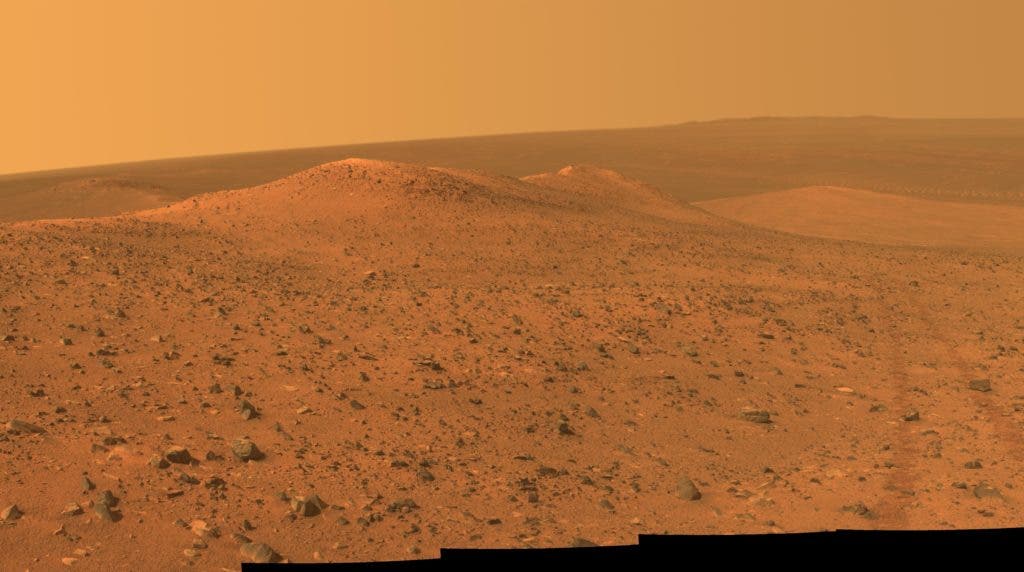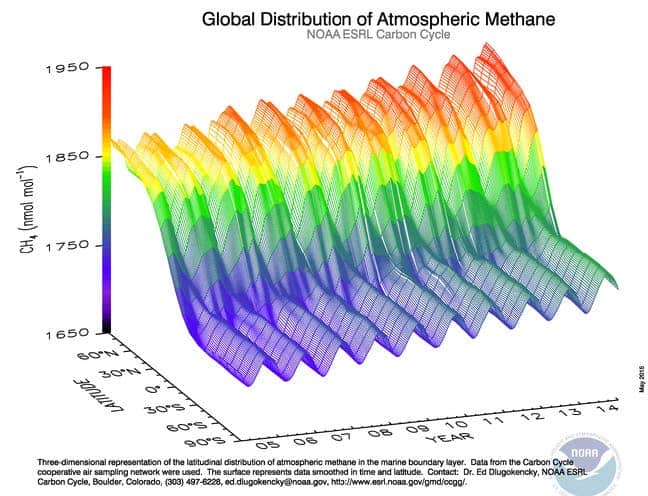Methane, a substance which goes hand in hand with life on Earth, has also been found on Mars. At a meeting of the American Geophysical Union (AGU) in New Orleans, Louisiana, NASA scientists reported that atmospheric methane on Mars exhibits a surprising variation. Its causes are still unknown.

Red Methane
Many things on Earth, from wetlands to permafrost, and from plants to animals themselves, generate methane. Researchers have been closely monitoring this substance as it is the most potent greenhouse gas in our atmosphere, albeit much more short-lived than CO2, for instance. But researchers were surprised to see any methane at all on frigid, barren Mars. Even more surprising was the large variation of the gas.
“The thing that’s so shocking here is this large variation,” said Chris Webster, who leads the methane-sensing instrument on NASA’s Curiosity rover. “We’re left trying to imagine how we can create this seasonal variation,” says Webster, who is at the Jet Propulsion Laboratory in Pasadena, California.
Scientists analyzed data from the Curiosity Rover. Since it landed on the Red Planet, the rover sampled Martian air 30 times, reporting extremely small background levels of the gas: around 0.4 parts per billion (ppb), compared with Earth’s 1800 ppb. But even small quantities need to come from somewhere. To make things even more mysterious, methane levels have been cycling from 0.3 ppb and 0.7 ppb over just two Martian years.
Some seasonality is, of course, to be expected. However, the mechanisms we’re currently aware of don’t even get close to explaining a variation of this magnitude. It could be that whatever is generating the methane has a temperature variation, which could translate to seasonality, but this is mere speculation at this point.
Diving into the realm of speculation, there’s also another possibility — “one that no one talks about but is in the back of everyone’s mind” — biological activity, says Mike Mumma, a planetary scientist at Goddard Space Flight Center in Greenbelt, Maryland. “You’d expect life to be seasonal.”
Life on Mars
Most of the methane on Earth was generated by microbes. There’s a good chance that the same process is, or was, happening on Mars. If this is the case, we would be dealing with either contemporary or ancient microbes. But ancient microbes wouldn’t really explain the seasonal variation, so going on this train of thought, it would appear more likely that we’re dealing with active microbial life on Mars. Yet this isn’t the only possible explanation.

Methane can also be generated through geological processes which have nothing to do with biology. Methane can be produced through hydrothermal reactions, especially ones involving olivine-rich rocks. It can also appear when carbon-containing meteoroids are bombarded by ultraviolet (UV) light, and dust falls down on the planet. This particular theory could also help explain the large variation.
Basically, the same chemical that produces methane from interplanetary dust at the surface level would be power-charged by UV light at high altitudes. As meteorite or comet dust particles fall down on the planet, they’re vaporized at tens of kilometers high in the air, producing significant quantities of methane. Since Curiosity’s reported variation can be somewhat correlated to meteor showers, Marc Fries, the cosmic dust curator at Johnson Space Center in Houston, Texas, believes this might explain the seasonality. But not everyone is convinced, and Fries himself concedes that meteor showers are highly variable and a causation is difficult to establish.
However, the good news is that Fries will have a chance to test his hypothesis: on 24 January, Mars will have a close encounter with comet C/2007 H2 Skiff — the comet is set to pass at less than a tenth of the Earth-moon distance. Even skeptics agree that this is a good opportunity to test the theory.
To make things even better, the European Space Agency’s ExoMars Trace Gas Orbiter will start observations on Mars, mapping methane distributions across the planet. But if neither of these tests confirms Fries’ theory, it’s back to the drawing board.


